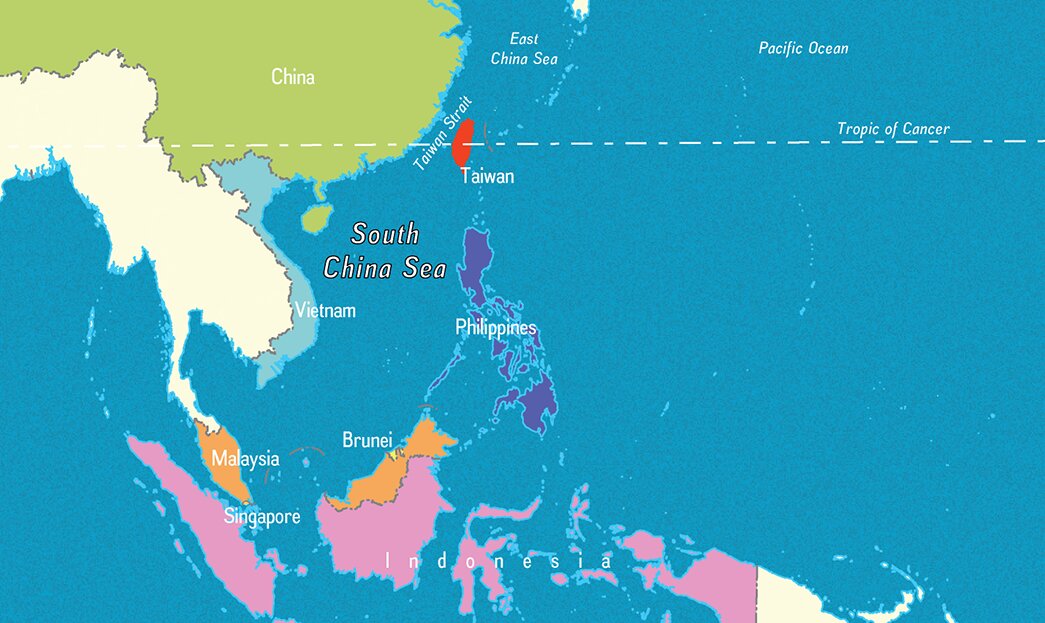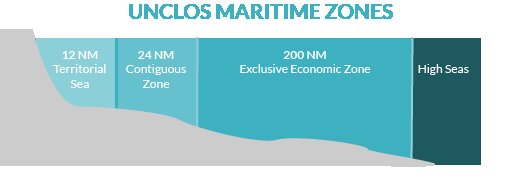International Relations
Group Sail Naval Drill
- 10 May 2019
- 5 min read
Recently, warships from India, the US, Japan and the Philippines conducted a six-day naval drill ‘Group Sail’ in the contentious South China Sea.
Key Points
- The Group Sail was aimed to deepen the existing partnership and foster mutual understanding among the participating navies.
- It showcased India’s commitment to operating with like-minded nations to ensure safe maritime environment through enhanced interoperability.
- In the backdrop of China’s aggressive and expansionist behaviour in the South China Sea, India has consistently reiterated the need for all countries to respect the freedom of navigation in international waters and overflight consistent with international law, including the United Nations Convention on the Law of the Sea (UNCLOS) of 1982.
- The strategically important waterway is claimed almost in its entirety by China, but this is hotly disputed by Beijing’s neighbours like Vietnam, Philippines, Indonesia, etc. The sea is estimated to have a vast reserve of hydrocarbons.
- In July 2016, the Permanent Court of Arbitration at the Hague issued its ruling on a claim brought against China by the Philippines under UNCLOS, ruling in favour of the Philippines on almost every count.
- While China is a signatory to the treaty, which established the Court, it refuses to accept the court’s authority.
Issues Involved
- The exercise comes at a time when India has been warily looking at increased Chinese activity in the northern Indian Ocean, traditionally seen as India’s backyard. The presence of Chneise ships and submarines has been on the rise.
- In 2017, China opened its first overseas military facility in Djibouti and has also been investing heavily in infrastructure along Africa’s eastern coast – in Tanzania and Kenya – as part of its ambitious Belt and Road Initiative (BRI).
- These activities reflect China’s attempt to encircle India through different base around its neighbouring countries, popularly known as "String of Pearls".
- The String of Pearls is a geopolitical theory related to potential Chinese intentions in the Indian Ocean region. It refers to the network of Chinese military and commercial facilities and relationships along its sea lines of communication, which extend from the Chinese mainland to the Sudan Port.
United Nations Convention on the Law of the Sea (UNCLOS)
- The 'Law of the Sea Treaty’, formally known as the United Nations Convention on the Law of the Sea (UNCLOS) was adopted in 1982 to establish jurisdictional limits over the ocean areas.
- The Law of the Sea Convention introduced a number of provisions and covered the most significant issues such as setting limits, navigation, archipelagic status and transit regimes, exclusive economic zones, jurisdiction of continental shelf, deep seabed mining, exploitation regime, protection of the marine environment, scientific research, and settlement of disputes.
- India became a signatory to the UNCLOS in 1982.
- UNCLOS created three new institutions:
- International Tribunal for the Law of the Sea: It is an independent judicial body established by UNCLOS to adjudicate disputes arising out of the convention.
- International Seabed Authority: It is a UN body set up to regulate the exploration and exploitation of marine non-living resources of oceans in international waters.
- Commission on the Limits of the Continental Shelf: It facilitates the implementation of the UNCLOS in respect of the establishment of the outer limits of the continental shelf beyond 200 nautical miles.
- The convention defines the distance of 12 nautical miles from the baseline as Territorial Sea limit and a distance of 200 nautical miles as Exclusive Economic Zone limit.






